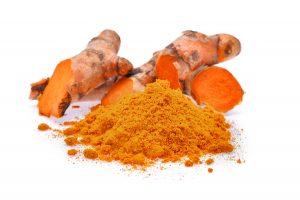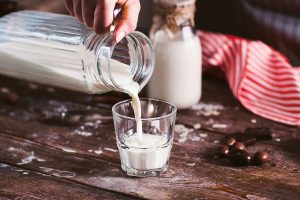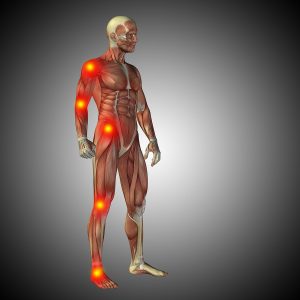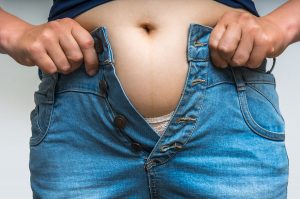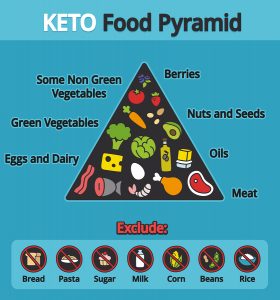Many clinicians give their attention to curcumin and cancer. Physicians may use curcumin not as a primary treatment, but may add it as an adjunct to other cancer treatments. Curcumin is the effective ingredient of the old Indian spice, turmeric. The question is how effective curcumin is against cancer? Is it safe to use? What is the evidence?
Frequency of cancer
According to the American Cancer Society there will be 1,688,780 new cancer cases in 2017 and 600,920 cancer deaths will occur in the US.
Causes of cancer
There are many different causes for cancer. Hidden in the many causes may be the possible solution to new cures.
Lack of exercise
A lack of exercise may contribute to the development of cancer because of a lack of tissue circulation. And exercise will help to support your normal cell metabolism (explained below). Wrong foods may or may not have a contributory role regarding cancer development (a high sugar and starch diet causing insulin response, which changes the metabolism). The Mediterranean diet is an anti-inflammatory diet and has been credited to prevent a lot of cancers.
Carcinogens
Chemicals, called carcinogens can cause cancer. But oncoviruses can also cause it. Genetic mutations can also cause cancer. That’s why it tends to run more often in certain cancer prone families. But Warburg has researched the metabolism of cancer almost 100 years ago, even got the Nobel price for it in 1931 and yet the elusive cancer cure has not materialized yet.
DNA mutations, tumor suppressor genes metabolic difference between cancer cells and normal cells
Following Warburg’s research Watson/Crick detected DNA in our cells. Ever since geneticists found this fascinating by it. They also found that a cancer suppressive gene, regulated by the p53 gene could develop mutations and then cancer would occur: tumor suppressor genes. For decades this was the “in” thing. But in the last 5 to 10 years there is a revitalization of the original Warburg idea that one should concentrate on the metabolic differences between cancer cells and normal cells. This is starting to show some timid results. Cancer cells are more acidic from lactic acid and burn glucose for energy without requiring oxygen (anaerobic pathway), while normal cells burn glucose in the aerobic pathway in the mitochondria. This difference is important. Certain manipulations are more likely to kill cancer cells.
Cryoablation therapy for prostate cancer
Take cryoablation therapy for prostate cancer. Cryosurgery for prostate cancer. A local deep freeze method like cryoablation therapy kills the more vulnerable cancer cells preferentially leaving the normal cells intact. Another example is photodynamic therapy for cancer that has been used for lung cancer and esophageal cancer. This method may be a lot more universally applicable than believed so far. The physician injects a photosensitized dye, which is normal cells eliminate, but cancer cells retain. Next the physician uses a laser beam that kills the cancer cells preferentially by absorbing the specific laser wavelength that is specific for the dye.
Consumer driven cancer therapies
Nobody knows which way cancer research is going. But I think that consumers will drive this: consumers want better cures. When new methods have better cure rates, consumers will demand treatments with these. Less effective methods will become history. I think that researchers will revitalize Warburg’s ideas and develop new therapies from this as I indicated.
Curcumin and cancer: malignant conversion
There are three development stages for any cancer to develop.
Originally cancer researchers used skin cancers a model. Later they could confirm that initiation, promotion and progression also were present with the development of cervical cancer. The name for this is “malignant conversion”. This needs to happen before a normal cell transforms into a cancer cell. Here are the three stages.
- Initiation
- Promotion
- Progression
This is important to know in the context of curcumin. Basic research has shown that curcumin interferes with all of these stages of tumor development, both in terms of prevention as well as in terms of being curative. Here is a link that points out the complex multiple steps of cancer growth that curcumin interferes with.
Multiple actions of curcumin
As can be seen from it, curcumin interferes with the initiation of multiple cancers, reduces inflammation, and interferes with angiogenesis and this reduces the amount of metastases that can form. But curcumin further interferes with proliferation of cancer cells, reduces invasion, prevents resistance and improves survival. The underlying molecular and genetic reasons for curcumin’s actions are all contained in that link.
Curcumin and cancer: research in tissue culture and animal experiments
When it comes to cancer research, you usually hear about in vitro culture experiments and animal experiments. This type of research is used to establish that there is an anti-cancer effect, that it is reproducible and non-toxic. The September issue of the 2016 Life Extension Magazine reviewed this in detail. It was entitled “How Curcumin Targets Cancer”.
But as a former clinician I am more interested in seeing cancer patients cured. This has to be verified by clinical trials first. When I looked through PubMed.com for objective evidence of the effects of curcumin in cancer patients, this type of information was more difficult to find. But in the following there are a number of examples that I did find.
Curcumin and cancer: clinical trials
1. Reduction of tumor necrosis factor-alpha
A 2016 meta-analysis of eight randomized studies investigated the effect of curcumin in patients with various inflammatory diseases including cancer. They found that curcumin consistently reduced tumor necrosis factor-alpha. In cancer patients this inflammatory substance is responsible for further cancer growth and developments of metastases.
2. Poor bioavailability of curcumin
A study with increasing amounts of curcumin showed poor absorption of curcumin into the blood. In this study researchers were giving dosages between 500 mg up to 12,000 mg per day of curcumin. 500 mg to 8000 mg of curcumin did not result in any positive serum level of curcumin. Only the higher dosages, 10,000 and 12,000 mg of curcumin, caused positive curcumin levels in the blood. Patients have to take higher amounts of curcumin to have a clinical response. Toxicity studies were done when using higher amounts of curcumin. The results showed taht it was safe and patients tolerated high dose curcumin fairly well.
3. Precancerous colonic polyps reduced in number and size
A smaller study consisted of 5 subjects with familial adenomatous polyposis (FAP). This is an autosomal-dominant disorder where hundreds of colorectal adenomas develop in the lining of the colon. From these colorectal cancer can arise. Five patients received 480 mg of curcumin and 20 mg quercetin orally three times per day. After 6 months the number of polyps and the size had reduced by 60.4%.
4. Premalignant colonic lesions suppressed by curcumin
44 eligible smoker subjects received a baseline colonoscopy where aberrant crypt foci (ACF) were determined. ACI are the very first focal areas in the colon that lead to colon cancer. Smokers have more of these lesions, which was the reason that researchers chose smoker subjects for this trial. The patients received either a supplement of 2000 mg of curcumin or 4000 mg of curcumin for 30 days. These are fairly high doses. They were used to overcome the poor absorption of curcumin. Colonoscopies were done again after one month of curcumin supplementation. 41 subjects completed the study. In the 4000 mg curcumin group the ACF numbers were reduced significantly by 40% compared to the 2000 mg group, which showed no reduction. The 4000 mg group showed a 5-fold increase of curcumin blood levels compared to baseline. The 2000 mg group had no change in blood levels.
5. Reduction of radiation dermatitis with radiation therapy in breast cancer patients
30 breast cancer patients were divided into an experimental group and a placebo group. All of them had a mastectomy first and subsequently radiation therapy. The experimental group received 6 grams (2 grams three times per day) of curcumin during the time of radiotherapy following mastectomy. The experimental group had significantly reduced radiation dermatitis following radiotherapy when compared to the placebo group. Only 28.6% had significant radiation dermatitis in the curcumin group versus 87.5% in the placebo group.
6. Chronic multiple myeloma patients
An Australian study involving chronic multiple myeloma patients found that curcumin at 4 Grams per day and even more so at 8 Grams per day stabilized the disease and improved kidney function.
7. Descriptive studies
Descriptive studies investigating the effect of various doses of curcumin have been done regarding breast cancer, and advanced pancreatic cancer. But these clinical trials were all rather small.
8. Chemoprevention of cancer
A phase II trial enrolled 21 patients with end-stage pancreatic cancer patients. The only FDA approved treatments for this are gemcitabine and erlotinib, but this would normally only lead to clinical responses in less than10% of patients. In this study the investigators used curcumin to enhance the anti-tumor response of either gemcitabine or erlotinib. The study summary stated: “Oral curcumin is well tolerated and, despite its limited absorption, has biological activity in some patients with pancreatic cancer.” 2 of the 21 patients had stable disease for more than 18 months; one of the 21 patients had a brief tumor regression of 78%, but then relapsed and died.
9. Chemoprevention of prostate cancer
Chemoprevention of prostate cancer is discussed in this publication: There was specific reference made to prevention of prostate cancer and the opinion of the researchers was: “At present, there is no convincing clinical proof or evidence that the cited phytochemicals might be used in an attempt to cure cancer of the prostate.”
Conclusion
For years there have been reports to indicate that curcumin was a promising natural supplement that can improve cancer survival. Many clinical trials regarding the effects of curcumin on colorectal cancer, pancreas cancer, prostate cancer, breast cancer, ovarian cancer and others had a poor design. But on closer look the hype seems to come mostly from in vitro studies (tissue culture experiments) or from animal studies. Clinicians, however, demand well-constructed randomized clinical trials with clear research objectives before they can accept a new agent like curcumin to be effective. These clinical trials are missing! Instead there are many in-between trials of questionable quality as listed above.
Problems with bioavailability of curcumin
There have been problems of bioavailability due to poor absorption of curcumin. Pushing the dosage to 6000 to 8000 mg per day succeeded in overcoming this limitation to a certain extent. But a significant percentage of people (around 30%) suffered from abdominal cramps and nausea and had to discontinue these high doses of curcumin. Researchers have developed newer curcumin compounds, but at this point it is unknown what the bioequivalent dosage is of these newer curcumin agents in comparison to the original curcumin dosages.
It is quite possible that researchers will one day design clinical trials that will bring better news on survival rates of various cancer patients involving curcumin therapy. But in my opinion right now it is not yet prime time for curcumin!
